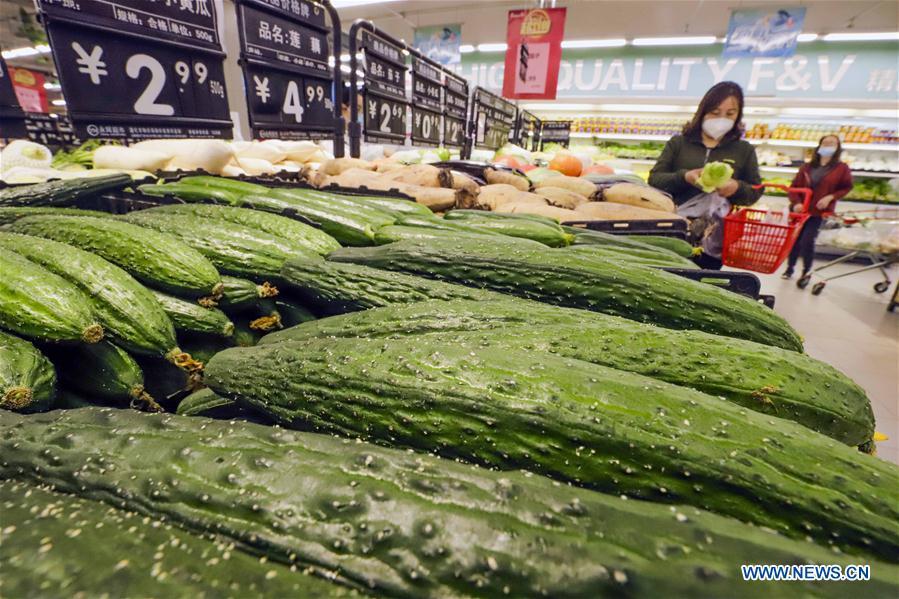BEIJING, May 12 (Xinhua) -- China's consumer inflation eased further in April on falling food prices as the country fast-tracks restoration of economic activities, while factory-gate prices continued to be bogged down by epidemic-dented demand, official data showed Tuesday.
China's consumer price index (CPI), the main gauge of inflation, grew 3.3 percent year on year last month, moderating from the 4.3-percent gain in March, according to data from the National Bureau of Statistics (NBS).
On a monthly basis, consumer prices went down 0.9 percent. Food prices, which account for nearly one-third of weighting in China's CPI, dropped 3 percent last month.
In breakdown, vegetable prices fell 8 percent from March over rising supplies as the weather warms, and pork prices continued to retreat amid recovering hog production. Prices of the staple meat in China dropped 7.6 percent in April from a month earlier.
Compared with the same period last year, food prices remained the main driver of consumer inflation in April, while its growth rate tapered from March to 14.8 percent.
Excluding food and energy, the core CPI rose 1.1 percent over last year, down from 1.2 percent in March, according to Dong Lijuan, a senior statistician with the NBS.
Zhao Xijun, a finance professor with Renmin University of China, said the recovery of market supply under the stepped-up resumption of production and business activities helped moderate consumer inflation.
Smooth logistics, as well as reduced transportation costs due to falling oil prices, will also help keep prices down, said Zhao.
In the first four months of this year, CPI went up 4.5 percent year on year on average.
Tuesday's data also showed China's producer price index, which measures inflation at the factory gates, fell 3.1 percent year on year last month.
The reading deepened from the 1.5-percent drop in March, with price declines widening in major industries.
Aside from the epidemic's negative impact on demand, the rout in the global oil market and retreating commodities prices, which delivered big shocks to the industrial chain, were other key drivers for the price deflation.
Prices for oil and natural gas extraction saw the biggest drop last month, plunging 51.4 percent year on year, while those for the processing of oil, coal and other fuel went down 19.8 percent.
Wen Bin, chief analyst at China Minsheng Bank, said in a co-authored research note that the CPI will continue to retreat in the coming months to allow policymakers more leeway to stimulate the real economy as the focus should be tilted toward growth and employment.
Meanwhile, further efforts should be made to spur recovery on the demand side and boost business confidence as producer prices hinge on both domestic and external factors, he said.
China's central bank said in its first-quarter monetary policy report that despite short-term price disruptions caused by the COVID-19 epidemic, there was no foundation for persistent inflation or deflation in the country.
It vowed to step up counter-cyclical adjustments to support the real economy, make the prudent monetary policy more flexible and appropriate, and continue to deepen the reforms of the market-oriented interest rate and the yuan exchange rate formation system. Enditem




 A single purchase
A single purchase









